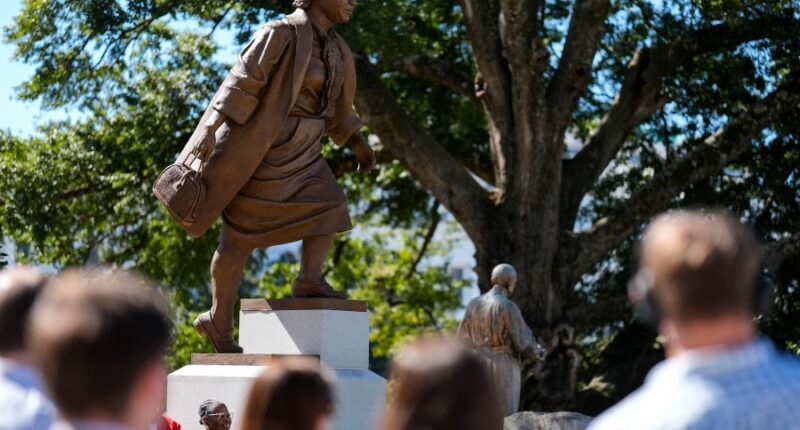Share this @internewscast.com

In a momentous event on Friday, the Alabama Capitol grounds witnessed the unveiling of statues dedicated to two iconic figures, Rosa Parks and Helen Keller. These statues honor the legacies of these Alabama natives, whose tireless efforts in advocating for justice and change have left an indelible impact worldwide.
For the first time, the Capitol lawn features monuments celebrating women, a significant addition to a site historically dominated by tributes to the Confederacy, which was founded there in 1861. This development reflects a growing effort to present a more diverse and inclusive historical narrative on the Capitol grounds, which until now, included no statues of distinguished women.
Inside the Capitol, there is a bust of Lurleen Wallace, Alabama’s first female governor who passed away in office in 1968. However, the absence of outdoor monuments to women was notable until now.
Alabama Representative Laura Hall, who spearheaded the legislation for these new monuments, emphasized the importance of showcasing the contributions of women in Alabama’s history. “Visitors to the Capitol should see the full story and recognize the significant roles women have played,” Hall stated.
Hall highlighted that the choice of Parks and Keller resonates across all demographics and political lines. “Whether you’re Black or white, Democrat or Republican, you can connect with the profound influence they’ve had on our history,” she remarked.
Rosa Parks, celebrated as the mother of the Civil Rights Movement, made headlines on December 1, 1955, when she defied segregation laws by refusing to relinquish her bus seat to a white passenger. Her courageous stand sparked a yearlong boycott by Black passengers, which ultimately led to the desegregation of the Montgomery bus system and inspired nationwide change.
Keller was born on June 27, 1880, in Tuscumbia, Alabama. She became deaf and blind after a serious illness shortly before her second birthday. With the help of tutor Anne Sullivan, Keller learned to communicate through sign language and Braille, and became a well-known writer and lecturer. She championed the rights of workers, poor people, women and people with disabilities around the world.
The statue of Parks was installed by the Alabama Capitol steps facing Dexter Avenue, the street where Parks boarded the bus and made history in 1955, just across from a statue of Confederate President Jefferson Davis.
The statue of Keller faces the Alabama Statehouse.
Their unveiling on Friday was more than six years in the making. Alabama lawmakers approved Hall’s legislation in 2019. The Alabama Women’s Tribute Statue Commission worked to see it through, commissioning the statues and finalizing the displays.















